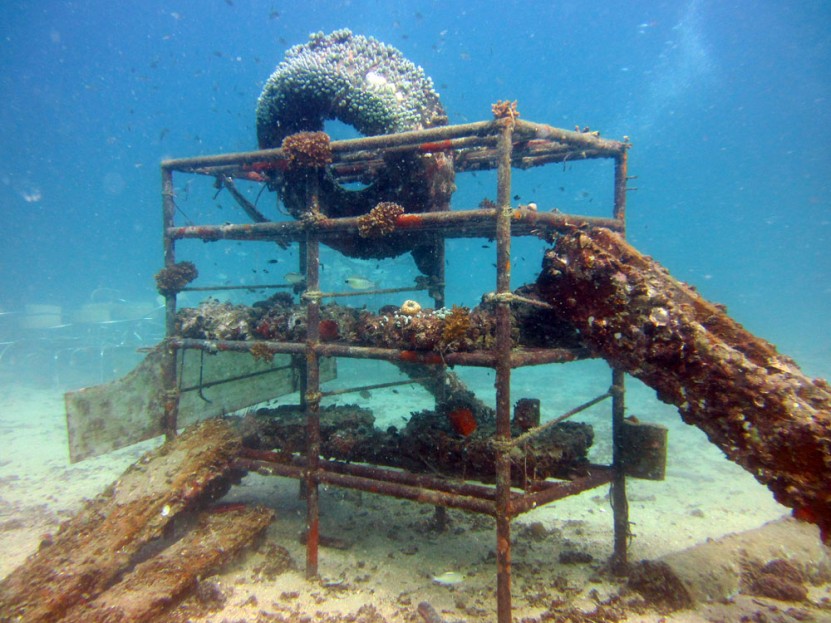November 20th, 2011 – Junkyard: Constant Search for Best Practices

In a constant search for the best solutions to marine conservation challenges Crystal Dive & Eco Koh Tao embarked on an experiment this week to determine some which might be the best adhesive to fix coral fragments to rock substrata.
Junkyard Reef is our own in-house artificial reef and forms an extension of Mae Haad Reef which happens to be one of two sites maintained and managed by Crystal Dive/Eco Koh Tao as part of Koh Tao’s ‘Adopt-a-Reef’ program.
Eco Koh Tao has been managing and maintaining coral nurseries for some years now, experimenting with different methods with mixed successes. In 2010 we joined Marine Conservation Koh Tao, the Department of Marine & Coastal Resources (DMCR) and the Prince of Songkhla University from Haad Yai in Southern Thailand to develop some more robust, semi-permanent structures to raise coral fragments on. The pilot program fared very well at both of our sites.
Corals are usually raised in nurseries for transplanting back onto natural reefs or onto artificial substrates when suitably mature. So when it came time to move our baby corals elsewhere no real plan had been developed as far as the ‘next step’ was concerned. At Twins, another of our sites we prefabricated and artificial structure specifically to receive our nursery corals, but how could we get them back onto the natural reef with success.
Earlier experiments had shown that most success comes from corals being securely fixed to their new location and to this end we decided to experiment with a few different methods of adhesion. It is difficult to find substances suited to this kind of underwater work. We tried 3 methods, 2 types of putty (One locally purchased and one imported) and one silicone (from the UK).
All three methods illustrated good success upon application with the local putty ‘bleeding’ a lot in the water suggesting the messiness of it isn’t what we are looking for. Now the test will be to see if any of them adversely affect the coral colony in the ensuing few days. Another test is to see if any of the fragments are dislodged as hungry wrasse and other predators pick at the symbiotic crabs that live on the replanted acroporas.
Either way, it was a huge success and helps us further advance our methods and conservation prowess on Koh Tao.
Thank you to the many volunteers who helped out with this project especially James Wickham, Guillaume De Remacle, Mischa Streekstra, Simon Dowling, Ray Cornelius & Johannes Visser.
Our Marine Conservation Partners include
Marine Conservation Koh Tao www.marineconservationkohtao.com
Save Koh Tao www.savekohtao.com
Crystal Dive www.crystaldive.com
Eco Koh Tao www.ecokohtao.com
Project Aware www.projectaware.org



